[Enjoy this guest post by returning contributor Richard Herbert. -Ed.]
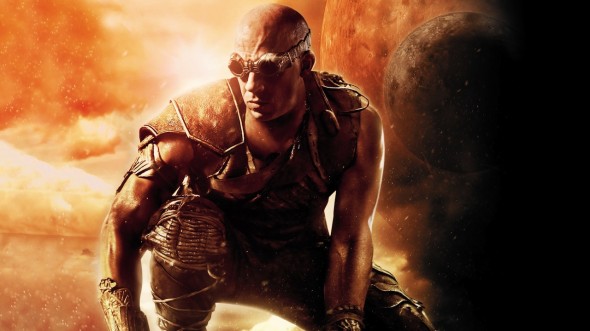
It’s hopefully not too controversial to say that Richard Riddick is more interesting than any of the movies featuring him. Not because David Twohy’s The Chronicles of Riddick trilogy is bad (though some films are certainly better than others), but because it is first and foremost an excuse to follow the titular character, not a story that could stand for itself. So it comes as no surprise that the latest, eponymous film in the series is worth seeing for, well, Richard Riddick.
I enjoyed it thoroughly, and was happy that it wasn’t necessary to see the first two installments in order to maintain comprehension (after a tertiary flashback explaining how he gave up his throne as King of the Necromongers and was betrayed by a fancy-looking Karl Urban, there’s little to remind us of the events of the previous film). In fact, all of the Riddick movies stand alone pretty well, particularly since they are so disparate in style and tone. Pitch Black is a creature-feature with a bent for morality; The Chronicles of Riddick is a silly, dystopic space-opera; and Riddick is, well, sort of like watching Jaws from the perspective of the shark.
But something struck me in the theater a week or two ago, as I watched Riddick inject himself with alien poison on a 4K screen: for a guy who’s escaped from a maximum security prison; survived a crash landing on a planet plunged into perpetual darkness and subsequent attacks from its native, nocturnal species; become king of the Necromongers, then quickly usurped, betrayed and left for dead on a deserted planet with mercenaries at his heel, Riddick hasn’t changed. At all. Riddick in the last shot of Riddick appears to be exactly the same as in the first shot of Pitch Black.
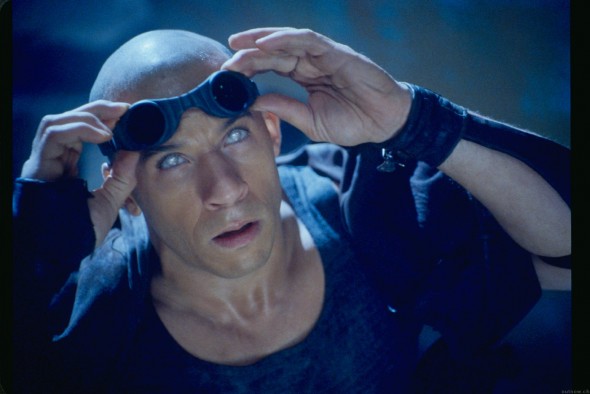
Which is what makes him so interesting to watch: he is both consistent and irreducible—his individual components do not, at least ostensibly, appear to add up to his whole. The trauma of his birth, the difficulty of his childhood, his time as a soldier and his subsequent detainments do not seem at first seem to causally explain why Riddick behaves the way he does. Even though each component of him can be isolated, and you can chart his life as a chronology and put it on a timeline, Riddick at point a (say Pitch Black) looks remarkably like Riddick at point x (say Riddick), despite radically changing variables over radical periods of time.
Most people, and indeed most characters in literature and film, behave in relatively predictable ways based on their context and environment. What is happening to them at any given moments affects their mood, behavior, and future choices–you might say they are linearly reactive. But some of the most fascinating characters on the silver screen, and on the printed and digital page, are what you might call nonlinearly reactive—their behavior is simultaneously unpredictable and entirely expected. What the character should be doing enters a positive feedback loop with what the character is known for doing, creating a kind of cinematic déjà vu: we feel that we have seen this before, yet we are nonetheless surprised.
One could argue this is merely due to his being a narrative foil—the result of a writer using a character for the same thematic purpose in each of his films—which may be true, but I will argue that Riddick’s moral and behavioral consistency, something that philosopher Manuel De Landa might call asymptotic stability, still reflects a macroscopic state whose tendencies appear to exist irrespective of changes in microscopic conditions. I.e., Riddick’s behavior appears to be relatively stable because his tendencies are always converging towards a moral zero.
But to think of Riddick this way, we need to stop seeing him as a person (which is easy, since he’s Furyan, anyways), and start seeing him as a dynamical system, wherein his overall moral choices may not be linearly affected by perturbations in his microscopic conditions.
The Stability of Moral States
First, let’s take a look at kinds of mathematical stability Manuel De Landa uses in his book Philosophy and Simulation: The Emergence of Synthetic Reason, and how we might apply it to human behavior.
Stability, in terms of dynamical systems, which is of our interest here, simply means that things starting near a certain point (probably the epicenter, like of a storm) stay near it over time–this is known as Lyapunov stability, and could be best described by thinking of a satellite orbiting a planet. If, however, things starting near a certain point eventually converge onto that point, then you have asymptotic stability—think of a bathroom sink. Water may start at any point within the basin, but given normal momentum it will eventually converge onto the drain.
De Landa uses convection cells in thunderstorms and chemical clocks as examples of asymptotic stability:
“A pendulum in which friction has been carefully eliminated, for example, will not react the same way: a small push will permanently change both the duration and intensity of its swing, the pendulum acting as if it “remembered” the perturbation. A convection cell or a chemical dock, on the other hand, quickly “forget” the perturbation, acting as if nothing had happened.”
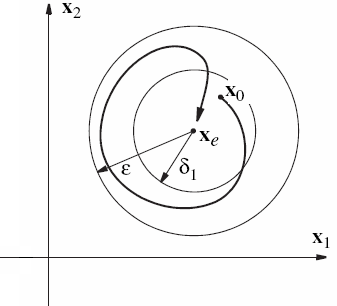
Illustration of asymptotic stability
Another way to think of this is in terms of emergence, which is a philosophical concept springing from physics (and, in the case of strong emergence, beyond physics) that refers to when unique macroscopic behavior emerges from the interactions of microscopic components. While emergence is in theory always referring to unexpected high-domain patterns and phenomena, those that are still deducible to the sum of their low-domain parts they are called weakly emergent, whereas patterns that appear irreducible to their core components are called strongly emergent. (And since the concept is scientifically spurious, strong emergence will not discussed here in much detail.)
The cellular automata of The Game of Life is a classic example of weakly emergent phenomena, as De Landa explains:
The cells housing finite state automata in Life are rectangular in shape and the automata are capable of being in only two states, “on” and “off.” This is usually expressed as if the two states belonged to the cells themselves which are said to be “alive” or “dead,” respectively…The interaction rules of Life are deceptively simple: if at a given moment a cell has two neighbors that are alive it will stay in the same state it was in the previous instant, that is, if the cell was alive it will stay alive and if it was dead it will remain dead; if the cell is dead and three of its neighbors are alive, it will come alive; finally, if the cell is alive and only one neighbor is alive, or if more than three are, it will die.
The rules are applied to the entire population simultaneously and repeatedly for as long as the simulation is allowed to last. The fact that the interactions are rigidly specified by rules implies that they are not emergent. On the other hand, as the population interacts patterns of states in neighboring cells appear and these are indeed emergent since the patterns have properties, tendencies, and capacities that are not present in the individual automata.

Snowflakes are examples of weakly emergent phenomena
Most humans show a kind of weak moral and ethical emergence: our moral macroscopic behavior can be somewhat explained by the interactions of our moral microscopic components, e.g. Jane’s approval of corporeal punishment may be due to the dynamical interaction between her fundamentalist Christian church and a home environment that reinforces those beliefs. As Jane’s initial microscopic conditions change, or are perturbed, her macroscopic conditions are affected, too. For instance, if Jane is accepted into a liberal arts college and faces a sudden influx of dissenting opinions, then her initial approval of corporeal punishment may destabilize, eventually forming a new macroscopic moral state, perhaps of conditional approval or outright disapproval. The amount of macroscopic change is dependent on the strength, or momentum, of the individual microscopic components and their subsequent interactions.
Weak emergence explains a character like Radha Mitchell’s in Pitch Black. The guilt following her in initial, albeit unsuccessful decision to dump the passenger cabin in order to save her foundering spaceship, which was based on her initial moral conditions—e.g. sacrificing others to save yourself is worth it–led to guilt and remorse, which in turn affected a shift in those moral conditions. Therefore, when faced with a similar situation at the end of the film—the opportunity to escape the planet with Riddick, at the expense of the other survivors—her decision is affected by that earlier perturbation of her moral variables, and so she saves her crewmates instead. This seems like the most basic of examples of how changes in initial conditions affect outcomes later on in a linear, bottom-up fashion. But this kind of weak emergence seems unable to explain a character like Richard Riddick, whose moral and ethical state does not appear to be linearly stable.
There is certainly no doubt that Riddick’s moral center, which appears to be defined by indifference, survival, fomenting chaos, and a strange affinity for protecting the weak, can be perturbed. His strange affinity for Jack/Kyra, however complicated; his subterranean anger over Imam’s death; and his friendship with the dog-beast in the final film all represent ways in which Riddick threatens to be destabilized. But, as with any system displaying signs of asymptotic stability, microscopic perturbations in Riddick’s moral beliefs will not affect his macroscopic state, even over a large enough period of time. Indeed, the unlikely bond that forms between him and Radha Mitchell’s character at the end of Pitch Black hints towards a redemption for Riddick, the reification of a compassion that lies dormant within him. But that compassion, however real it is as a capacity, nevertheless eventually converges towards his moral zero, his compassionless epicenter. Like water in a sink, his smile and humanity slowly drains away–the flicker of humanity gives way to the night of the universe. Riddick-the-dynamical-system is therefore not merely a weakly emergent phenomena, but an asymptotic one as well. Watching him murder mercenaries gleefully in the final film, one would not suspect this to be a man for whom many a good person has sacrificed themselves over the course of two decades. Riddick represents chaos in its purest form: “When the present determines the future, but the approximate present does not approximately determine the future.”
Which is perhaps what fascinates and frightens us about Riddick. He embodies the pivotal existential plight of the modern condition: the knowledge of an immense and indifferent universe, coupled with a constantly threatened ontology, has made us cling ever-more to pop culture that represents the individualistic, the fascist, the belief that one person can change things, can be purposeful and meaningful. Superman makes moral choices based on his surroundings, based as much as what society wants as his strict, unwavering moral code. But Riddick, like James Bond or Heathcliff or Hannibal Lecter, is more of a force than a person—a convection cell going through state changes, sliding across the vast spacescape, always stable, always swirling, eyes always shining.
Stanley Kubrick once said: “The most terrifying fact about the universe is not that it is hostile but that it is indifferent.” At the end of Riddick, the seemingly immortal character scrambles up a jagged rock jutting off a steep cliff, rain and a teeming mass of vicious beasts swarming and converging upon him. It seems to be the end of his saga, until a literal deus ex machina saves him from his imminent doom. He thanks his saviors, even offers them a sly, perhaps sarcastic token of respect, before smirking one final time and flying into the distance. What we see in Riddick that is human is merely what we want to see, what we fool ourselves into believing exists in the universe as a whole. But, perhaps there is not something behind the smirk, save for a dynamical system–a convection cell with one epicenter, one singularity, one ending towards which everything, and everyone, converges.
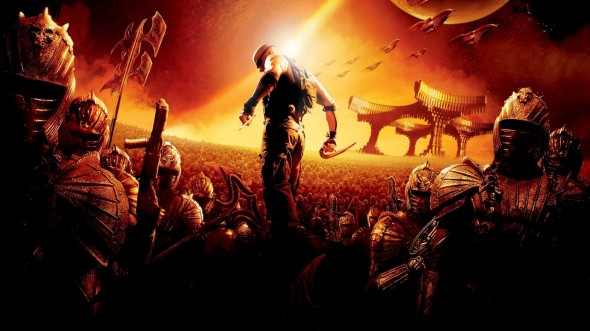
Richard Herbert is a freelance marketing writer and film geek in Portland, who spends most of his time drinking coffee and over-analyzing pop culture. His previous submission to Overthinking It, “Madness and Superheroes,” presents a Foucaultian analysis of Batman and Superman movies.
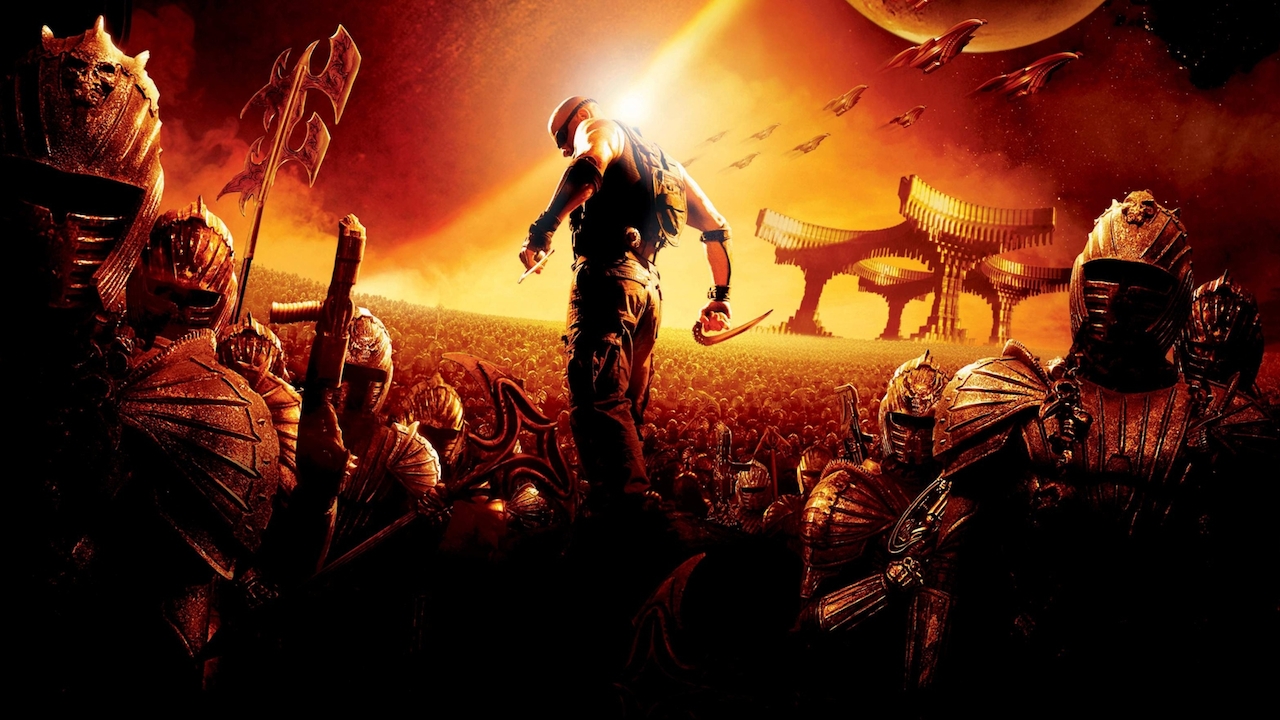
wow, that was waaaay overthought:P
I’ll take that as a compliment ;)
Incredibly good analysis. Loved it! One small correction; the character that the author keeps calling Radha Mitchell is in fact Carolyn Fry.